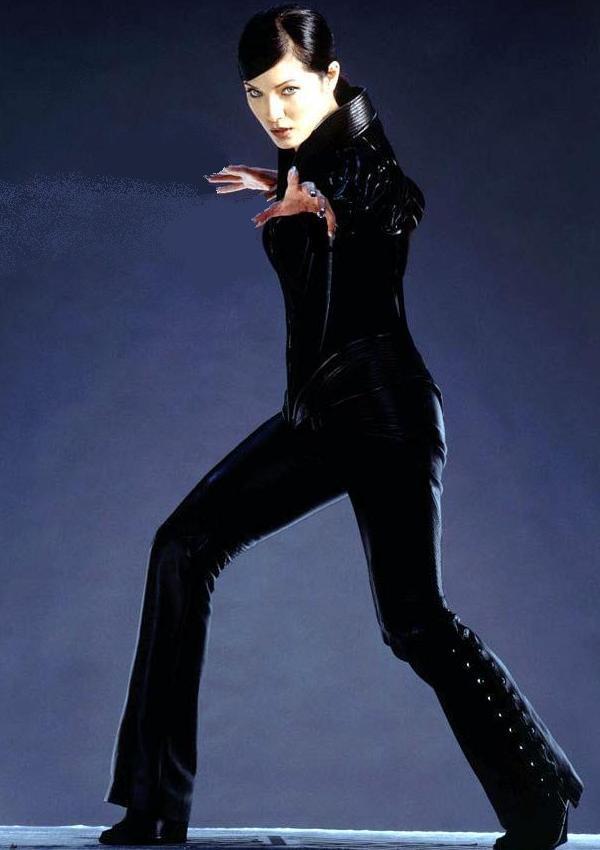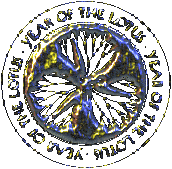
SABRA
SABRA (Smith Academy for Budo & Related Arts) stands as Nekoko’s Sleeper “front” and business. Though hardly her only financial enterprise, it is her standing in the community of mortals. She goes by the name Kimi Hinodi in Little Asia and is known among businessmen and families alike as an upstanding and compassionate citizen. The studio was opened in 2000 but rides the reputation of Nekoko’s first SABRA school, located out in San Francisco. That’s one of the main reasons that after only two years, the SABRA school boasts approximately 200 students.
Shortly after establishing SABRA in Little Asia, Nekoko’s standing as a respected businesswoman allowed her to organize a business association in the district. Called simply the Merchants’ Association of Little Asia, it is comprised of numerous small businessmen and women in Little Asia. Most of these people run businesses near or in the Marketplace. Their union gives the small businesses a greater voice -- a voice Nekoko humbly applies to the city at whole. With the growth of Little Asia, tourism has risen as an industry. It is the small businesses that makes or breaks tourism, and so it has given them -- and Nekoko -- some small influence over city politics. Nekoko, as “Sensei Hinodi”, is also known as a protector of the people due to her friendship with a feared assassin-for-hire known only as The Cat (another guise of Nekoko, of course). The Association is solid due to her ability and willingness to provide protection against foolish criminals who would attempt extortion tactics. No one in the Association pays “protection money” to anyone.
But that is rarely a problem, since local Triads and yakuza don’t stoop to extortion and are enough to keep most thugs in line. Most of the time, business runs smoothly. Nekoko keeps SABRA open everyday the schedule says it will be. Her students are almost all dedicated and respectful to the school. Rowdies aren’t accepted in the first place. Children are encouraged to join; the younger they start developing self-discipline and respect, the better! And Little Asians aren’t the only students. There are a decent number of Caucasians and African-Americans and other ethnicities in the school as well.
Though there are several martial arts academies throughout Kansas City, SABRA is definitely one of two of the best known. The other school well-known in the community is the Hung Family Kwoon. The most obvious difference between schools is that SABRA teaches Japanese martial arts and the Kwoon teaches Chinese martial arts. The instructors of the Kwoon, Hung Hsi Kuan and Mai (both Shih), get along well with Nekoko inside and outside the Court. They hold friendly competitions on occasion, but for the most part do their own thing. Another major difference between SABRA and the Kwoon -- the Kwoon boasts many more shen as students and assistant instructors than SABRA does (and that’s the way Nekoko likes it!).
A description of the school can be found here. Curiously, Nekoko has not erected any supernatural wards or counter-measures. An angry Kin-jin could rush into the school in the middle of class and massacre two dozen students, young and old. Strange that the most powerful shinta in Little Asia would keep the school so vulnerable to supernatural attack. Like the master who owns and runs the academy, SABRA may have mysteries yet to be revealed.
Training Regimen of SABRA
Style
Students are taught many techniques, kata (a number of proven techniques put together in a dance-like pattern), and traditional martial arts weapon use. In general, Nekoko refers to this as budo (“the way of the warrior”). Her teachings are similar to what samurai were once taught centuries ago. Her school’s style is evidently an amalgam of jujutsu, aikido, and karate with both Japanese and Okinawan weapons. Actually, the techniques she shows her students are better compared to as bujutsu (“the fighting methods of the warrior”), since she does not water down her techniques at all. Obviously, children are not shown lethal techniques, and all of her students are weighed in the Mind Master’s immense insight regularly. She has no psychos in her school. The fact is, Nekoko’s true weaponless style is taijutsu - the fighting methods of the ninja, developed long ago by Go Kamisori Gama. And although she never shows her style’s secrets, some of her techniques that are taught can’t be found in any jujutsu, aikido, or karate school.
None of her students are aware of her status as Go Kamisori Gama. Indeed, no one knows about her as Go Kamisori Gama in the whole city except the few other Go Kamisori Gama who serve her in Cabal Reito. It is assumed she is a member of the Akashic Brotherhood and that is what she normally claims to be when pressed to answer.
Rank & Progress
The academy holds a simple structure. Nekoko is the head instructor, the sensei. Her students are promoted on the belt-rank system, from lowest to highest, as follows: white, yellow, blue, green, brown, black. Degrees are held on all belts to signify partial development (and as an additional reward system). As time passes, she will award assistant instructor status to appropiate students. Assistant instructors are also known as sempai and wear special training uniforms to signify their status. All students’ dogi (uniforms) are white with appropiate and school-sanctioned patches only. As tradition holds, only the head instructor wears a black gi (and it was simply to distinguish students from instructors at large gatherings and tournaments).
The emphasis on constant training and the rewards given, which are not limited to belt steps, help develop self-discipline and self-confidence. Recitation of a “student creed” in every class, the creed made up of elements of virtue and honor, nail it all home. Furthermore, as time passes, a student is drawn into the mysteries of martial arts. Nekoko’s martial arts mastery cannot be denied or hidden, and her demonstrations serve to ensnare a student’s interest.
Forms (Kata)
Nekoko utilizes only a handful of the kata taught out there. Here are the forms as required for each belt rank (to be promoted, part of every test is demonstrating appropiate levels of skill with each kata).
Hachi-kyu (yellow belt): Ju-no-Kata I
Shichi-kyu (senior yellow belt): Ju-no-Kata II
Roku-kyu (blue belt): Ju-no-Kata III
Go-kyu (senior blue belt): Goshin-no-Kata
Yon-kyu (green belt): Kime-no-Kata
San-kyu (senior green belt): Randori-no-Kata
Ni-kyu (brown belt): Itsutsu-no-Kata
Ik-kyu (senior brown belt): Koshiki-no-Kata
Shodan (1st degree black belt): Kamiryu-no-Kata
Nidan (2nd degree black belt): Neko-no-Kata
Weapons
Nekoko teaches nearly every Japanese weapon conceived. Both budo and kobudo weapons are taught. This includes the yari (spear), daisho (swordmanship with the katana [long] and wakizashi [short] swords), gunsen (war-fan), ono (war-axe), yumi and hankyu (long and short bows), shuriken (throwing stars), naginata (halberd), tanto (knives), kama (sickle), kusari (chain), kusarigama (chain-and-sickle), ferozue (staff-and-chain), kusarifundo (short chain), sai (three-pronged dagger), nunchaku (short flail), bo and jo (long and short staff), kue (hoe), tsue (cane), kai (oar), tonfa (mill handle), fukiya (blowpipe), and kubotan (keychain rod). Below are the required weapons per rank. Weapons not listed below but are listed above are taught optionally in regular, special seminars. All weapons are taught with at least one kata or several very short forms.
Hachi-kyu (yellow belt): Jo-Kata-Sho
Shichi-kyu (senior yellow belt): Rokushakubo-Kata-Sho
Roku-kyu (blue belt): Yari-Kata-Sho
Go-kyu (senior blue belt): Nunchaku-Kata-Sho
Yon-kyu (green belt): Sai-Kata-Sho
San-kyu (senior green belt): Naginata-Kata-Sho
Ni-kyu (brown belt): Tonfa-Kata-Sho
Ik-kyu (senior brown belt): Kama-Kata-Sho
Shodan (1st degree black belt): Kusari-Kata-Sho
Nidan (2nd degree black belt): Tanto-Kata-Sho
Sandan (3rd degree black belt): Roku-Do-no-Ken-Kata-Sho
Yondan (4th degree black belt): Kusarigama-Kata-Sho
Godan (5th degree black belt): Gunsen-Kata-Sho





